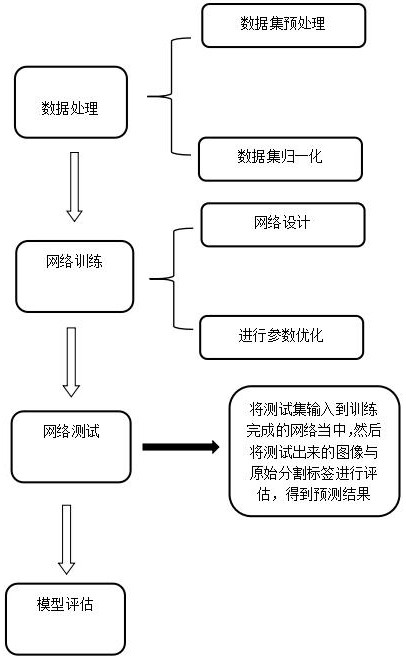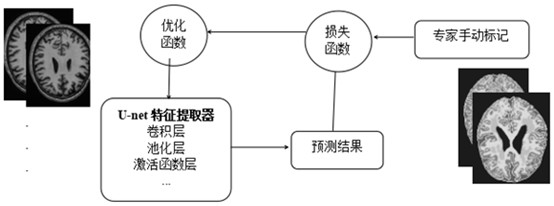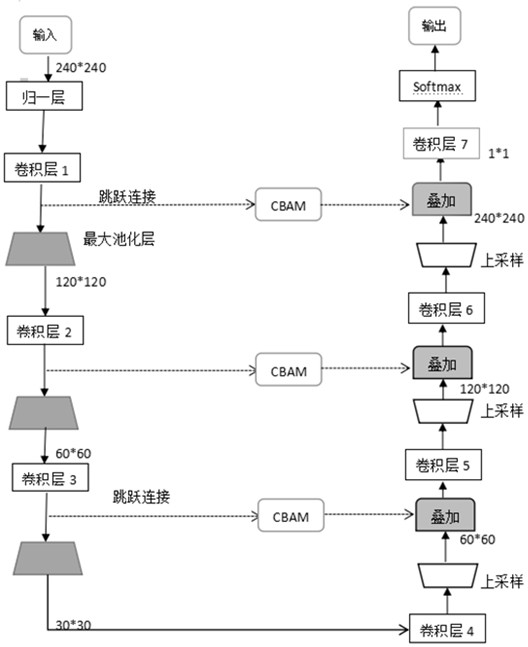MRI (Magnetic Resonance Imaging) segmentation method for integrating attention mechanism aiming at brain lesion
A technology of attention and brain, applied in the field of image recognition, can solve the problems of limited receptive field of convolution kernel, high labeling requirements, and poor effect, so as to avoid calculation and memory requirements, improve lesion segmentation accuracy, increase Effect of color information data
- Summary
- Abstract
- Description
- Claims
- Application Information
AI Technical Summary
Problems solved by technology
Method used
Image
Examples
Embodiment Construction
[0060] As shown in the figure, an MRI segmentation method for integrating brain lesions into the attention mechanism includes the following steps;
[0061] Step S1, collecting brain MRI images with segmentation map results, and establishing a training set;
[0062] Step S2, preprocessing the original brain MRI images to be segmented in the training set;
[0063] Step S3, establishing a convolutional neural network with an attention mechanism, and training its model with a training set;
[0064] Step S4. After the model training is completed, use the trained model parameters to predict the verification set images, and generate brain MRI tissue and lesion segmentation maps;
[0065] Step S5, establishing an evaluation file, and evaluating the segmentation result.
[0066] In step S1, use the MRBRains18 data set containing normal brain tissue and diseased tissue, and the MRI images of the MRBRains18 data set include three modes of T1, T2 and Flair; in step S1, perform skull str...
PUM
 Login to View More
Login to View More Abstract
Description
Claims
Application Information
 Login to View More
Login to View More - R&D
- Intellectual Property
- Life Sciences
- Materials
- Tech Scout
- Unparalleled Data Quality
- Higher Quality Content
- 60% Fewer Hallucinations
Browse by: Latest US Patents, China's latest patents, Technical Efficacy Thesaurus, Application Domain, Technology Topic, Popular Technical Reports.
© 2025 PatSnap. All rights reserved.Legal|Privacy policy|Modern Slavery Act Transparency Statement|Sitemap|About US| Contact US: help@patsnap.com



